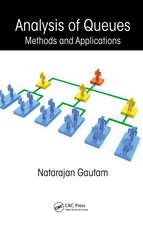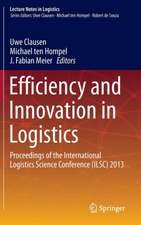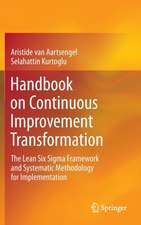Industrial Assembly
Autor Shimon Y. Nof, Wilbert E. Wilhelm, H. Warneckeen Limba Engleză Paperback – 2 noi 2012
Preț: 651.19 lei
Preț vechi: 766.10 lei
-15% Nou
Puncte Express: 977
Preț estimativ în valută:
124.62€ • 129.63$ • 102.88£
124.62€ • 129.63$ • 102.88£
Carte tipărită la comandă
Livrare economică 15-29 aprilie
Preluare comenzi: 021 569.72.76
Specificații
ISBN-13: 9781461379379
ISBN-10: 1461379377
Pagini: 516
Ilustrații: XII, 500 p. 82 illus.
Dimensiuni: 155 x 235 x 27 mm
Greutate: 0.72 kg
Ediția:Softcover reprint of the original 1st ed. 1997
Editura: Springer Us
Colecția Springer
Locul publicării:New York, NY, United States
ISBN-10: 1461379377
Pagini: 516
Ilustrații: XII, 500 p. 82 illus.
Dimensiuni: 155 x 235 x 27 mm
Greutate: 0.72 kg
Ediția:Softcover reprint of the original 1st ed. 1997
Editura: Springer Us
Colecția Springer
Locul publicării:New York, NY, United States
Public țintă
ResearchCuprins
1 Introduction and fundamental concepts of assembly.- 1.1Introduction.- 1.2Nature and role of assembly in industry.- 1.3 The economic significance of assembly.- 1.4 Assembly engineering and rationalization.- 1.5 Management issues and assembly organizations.- 1.6 General taxonomy of assembly operations and systems.- 1.7 Assembly information representation.- 1.8 Fundamental models and measures of assembly.- 1.9 Assembly planning issues.- 1.10 Summary.- 1.11 Review questions.- References.- 2 Assembly tasks and technology.- 2.1 Introduction.- 2.2 Levels of automation and flexibility in assembly.- 2.3 Assembly tasks.- 2.4 Disassembly tasks.- 2.5 Insertion and joining tasks.- 2.6 Summary.- 2.7 Review questions.- References.- 3 Design for assembly.- 3.1 Introduction.- 3.2 Product design for assembly.- 3.3 Group technology for assembly.- 3.4 Procedural systems for assemblability evaluation.- 3.5 Design for disassembly and recycling.- 3.6 Computer-aided methods for DFA.- 3.7 Artificial intelligence approaches to DFA.- 3.8 Summary.- 3.9 Review questions.- References.- 4 Design of assembly systems.- 4.1 Introduction.- 4.2 The planning of an assembly system.- 4.3 Assembly organization.- 4.4 Handling facilities.- 4.5 Machines for assembly automation.- 4.6 Economic justification of assembly systems.- 4.7 Examples of assembly systems.- 4.8 Summary.- 4.9 Review questions.- References.- 5 Assembly system design and planning.- 5.1 Introduction.- 5.2 Assembly line balancing.- 5.3 Assembly system design.- 5.4 Process planning in assembly.- 5.5 Sequence planning for robotic assembly.- 5.6 Summary.- 5.7 Review questions.- References.- 6 Performance evaluation of stochastic assembly systems.- 6.1 Introduction.- 6.2 Push systems.- 6.3 Pull systems.- 6.4 Flexible assembly systems.- 6.5 Simulation analysis.- 6.6 Summary.- 6.7 Review questions.- References.- 7 Sequencing and scheduling of assembly operations.- 7.1 Introduction.- 7.2 Scheduling in push systems.- 7.3 Level scheduling in just-in-time pull systems.- 7.4 Sequencing in mixed-model assembly lines.- 7.5 Summary.- 7.6 Review questions.- References.- 8 Time-managed material flow control.- 8.1 Introduction.- 8.2 The kitting process.- 8.3 Recursion models for repetitive assembly.- 8.4 Optimal time management.- 8.5 Summary.- 8.6 Review questions.- References.- 9 Quality and inspection in assembly.- 9.1 Introduction.- 9.2 Quality issues related to assembly.- 9.3 Inspection and test during assembly.- 9.4 Rework and repair in assembly.- 9.5 Error diagnosis and recovery in assembly.- 9.6 Communication and integration of assembly and inspection.- 9.7 Summary.- 9.8 Review questions.- References.- 10 Emerging trends in assembly.- 10.1 Introduction.- 10.2 Emerging trends in assembly technology.- 10.3 Emerging trends in the design of products and systems.- 10.4 Assembly utilities.- 10.5 The influence of emerging information technologies.- 10.6 Research issues in assembly.- 10.7 Summary.- 10.8 Review questions.- References.













